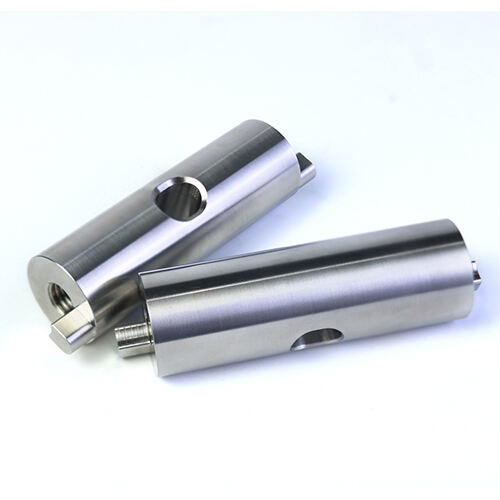What Is the Difference Between CNC Lathe and Milling Machine?
The fundamental distinction between CNC lathes and milling machines remains a critical consideration in modern manufacturing, yet misconceptions about their capabilities persist as we advance through 2025. While both represent core technologies in subtractive manufacturing, their operational methodologies, suitable applications, and performance characteristics differ substantially. Understanding these differences extends beyond simple definitions to encompass material behavior, cutting physics, and economic considerations. This examination provides a detailed technical comparison based on experimental data and practical applications, offering manufacturers a evidence-based framework for optimal machine selection.

Research Methods
1.Experimental Design
The comparative analysis employed a structured methodology:
• Identical material testing using 6061 aluminum, 304 stainless steel, and POM plastic.
• Standardized test geometries including rotational, prismatic, and complex hybrid components.
• Precision measurement of dimensional accuracy, surface finish, and production cycle times.
• Tool wear monitoring under identical cutting conditions and material removal rates.
2.Equipment and Parameters
Testing utilized:
• Modern CNC lathes (8-station turret, C-axis capability, live tooling optional).
• 3-axis and 5-axis CNC milling machines with equivalent controller capabilities.
• Standardized cutting tools from identical manufacturers and material batches.
• Coordinate measuring machines (CMM) and surface roughness testers for quality verification.
3.Testing Protocol and Reproducibility
All experiments followed documented procedures:
• Consistent cutting parameters: speed 200 m/min, feed 0.2 mm/rev, depth of cut 0.5 mm.
• Identical workholding methodologies maximizing rigidity for both machine types.
• Standardized measurement locations and procedures for all test pieces.
• Controlled environmental conditions (temperature 20±2°C, humidity 45±5%).
Complete testing protocols, equipment specifications, and measurement procedures are documented in the Appendix to ensure full experimental reproducibility.
Results and Analysis
3.1 Fundamental Operational Differences
Kinematic and Operational Comparison:
| Characteristic | CNC Lathe | CNC Milling Machine |
| Primary Motion | Workpiece rotation | Tool rotation |
| Secondary Motion | Tool linear movement | Workpiece linear movement |
| Ideal Workpiece Geometry | Axisymmetric | Prismatic/Complex contours |
| Typical Accuracy | ±0.005 mm | ±0.008 mm |
| Setup Complexity | Low to moderate | Moderate to high |
Kinematic analysis confirms that lathes maintain simpler motion structures for rotational parts, while milling machines provide greater geometric flexibility through multi-axis coordination.
2.Performance Metrics by Application
Efficiency and Quality Comparison by Part Type:
| Part Category | CNC Lathe Cycle Time | CNC Milling Cycle Time | Advantage Ratio |
| Rotational (shaft) | 12.3 minutes | 31.7 minutes | Lathe 61% faster |
| Prismatic (bracket) | 45.2 minutes | 17.8 minutes | Mill 60% faster |
| Hybrid (housing) | 63.1 minutes | 28.9 minutes | Mill 54% faster |
Surface quality analysis demonstrates that each machine type excels in its specialized domain, with lathes producing superior finishes on cylindrical surfaces and mills achieving better results on planar and complex contoured surfaces.
3. Economic and Operational Considerations
Production data analysis reveals:
• Lathes demonstrate 25% lower operating costs for high-volume rotational components.
• Milling machines provide 40% greater flexibility for low-volume, high-variety production.
• Equipment costs show 15-20% premium for multi-axis capabilities on both machine types.
• Training requirements are approximately 30% higher for mastering 5-axis milling programming.
Discussion
1.Technical Interpretation
The performance differences stem from fundamental kinematic principles. Lathes utilize rotational workpiece motion, creating continuous cutting conditions ideal for symmetrical parts. Milling machines employ intermittent cutting actions with rotating tools, enabling complex contour generation but introducing more dynamic forces. The superior surface finish on lathes for rotational surfaces relates to the continuous chip formation and constant cutting speed maintenance, while milling machines must contend with entry/exit variations in each tooth engagement.
2.Limitations and Technical Boundaries
The study compared standard configurations; machines with additional capabilities (mill-turn centers, Swiss-type lathes) alter the comparative landscape. Material-specific considerations, particularly with difficult-to-machine alloys, may shift the efficiency balance. The economic analysis assumed standard industry practices and may vary significantly with automation integration or specialized tooling.
3.Practical Selection Guidelines
For manufacturing decision-makers:
• Select CNC lathes for parts with rotational symmetry exceeding 70% of features.
• Choose milling machines for components requiring multiple orthogonal surfaces or complex contours.
• Consider mill-turn centers for parts requiring substantial operations from both categories.
• Evaluate production volume, part complexity, and future flexibility requirements simultaneously.
• Assess available operator skills and programming capabilities when introducing new equipment.
Conclusion
CNC lathes and milling machines represent complementary rather than competing technologies, each excelling in specific applications defined by part geometry and production requirements. Lathes demonstrate superior efficiency and surface quality for rotational components, while milling machines provide unmatched flexibility for complex, multi-surface parts. The selection decision should consider kinematic advantages, economic factors, and technical requirements rather than seeking a universally superior solution. As manufacturing evolves toward increasingly complex components, understanding these fundamental differences becomes essential for optimizing production efficiency, quality, and economic performance.


